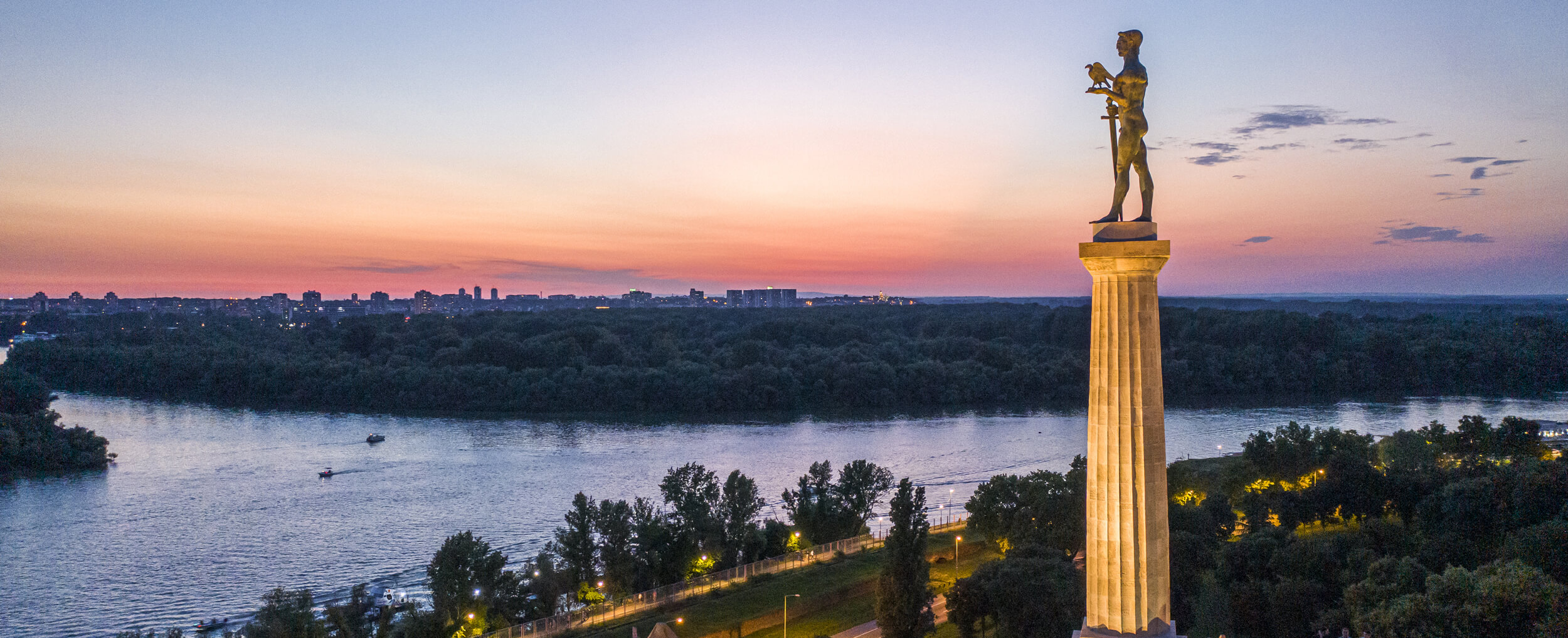Sava Gate is located at the main southern entrance, which is headed toward along the Sava river to the Western Suburb and further to the Lower Town. At this point, originally, at the time of King Stefan Dušan, was built suburbs south wall with the Southern Gate. That wall has been sloped down to the …
On the old plans this gate is marked as Karanlik kapuso or Dark Gate, which fully corresponds to its appearance. While the present name is not settled, this gate was known under various names, for example Sava Gate, Sabac Gate, Bosnian and Dark Gate. It was built between the 1740th and 1760th, in the front …
Big Staircase Descent is now the shortest communication between ports on the Sava River and Upper fortifications. Built in the middle of the 18th century during the Turkish reconstruction of the fortress. It is located in the outer ditch of the fortress, which was rebuilt with two caponiers containing arched passes. At the lowest part, …
Small Staircase Descent is a part of the outer fortifications on the Sava slope. On the top it is connected with the counterguard in front of the Royal Ravelin, and at the bottom with the bastion of the Dark Gate. It represented the internal defended fortress communication that was partition with three caponiers. Due to …
The remains of Stefan Lazarevic Castle are still preserved in the northwestern part of the Upper Town. The citadel or inner town was firstly designed as a Byzantium fortress in the twelfth century. It was rebuilt during the rule of despot Stefan Lazarevic during the period between 1404 and 1427. Archaeological researches, which were carried …
Continue reading “Remains of Despot Stefan Lazarevic Castle”
The base of the south-eastern rampart surrounding the Upper Town was built between 1404 and 1427 during despot’s rule over Belgrade. At that time, the rampart’s Southern Gate represented the main entrance into the medieval fortification. Despot’s biographer, Constantine Philosopher, mentions other gates of Belgrade Town (Eastern, West and North). The exploration of the Southern …
The two storey barracks building with a baroque façade was erected parallel to the southeastern rampart in the year 1720. It was pulled down at the end of the same century, when Turks re-established their rule over the Fortress.
The barracks built by Austrians during the twenties of the eighteenth century. The Turks only tore down some portion of the building as to adjust it to their needs. These barracks are mapped into the plans dating from the nineteenth century, where it is mentioned as a hospital of “the royal Nizamic army”. After the …
Continue reading “Barracks near Northeastern Part of the Upper Town”
This small powder magazine was located in the eastern corner of the Upper Town, between the remains of the two barracks up until the start of the Second World War. It was built between 1725 and 1736 as most of the powder magazines in the fortresses from the eighteenth century.
The building, which housed the command of the Belgrade Fortress – the Main Guard Building, was erected during the Austrian reconstruction of the fortress during the thirties of the eighteen century. Sultan Mahmud I (1730-1754) subdued Belgrade once again to Turkish power, and he added flanking galleries and a minaret, turning the building into a …

